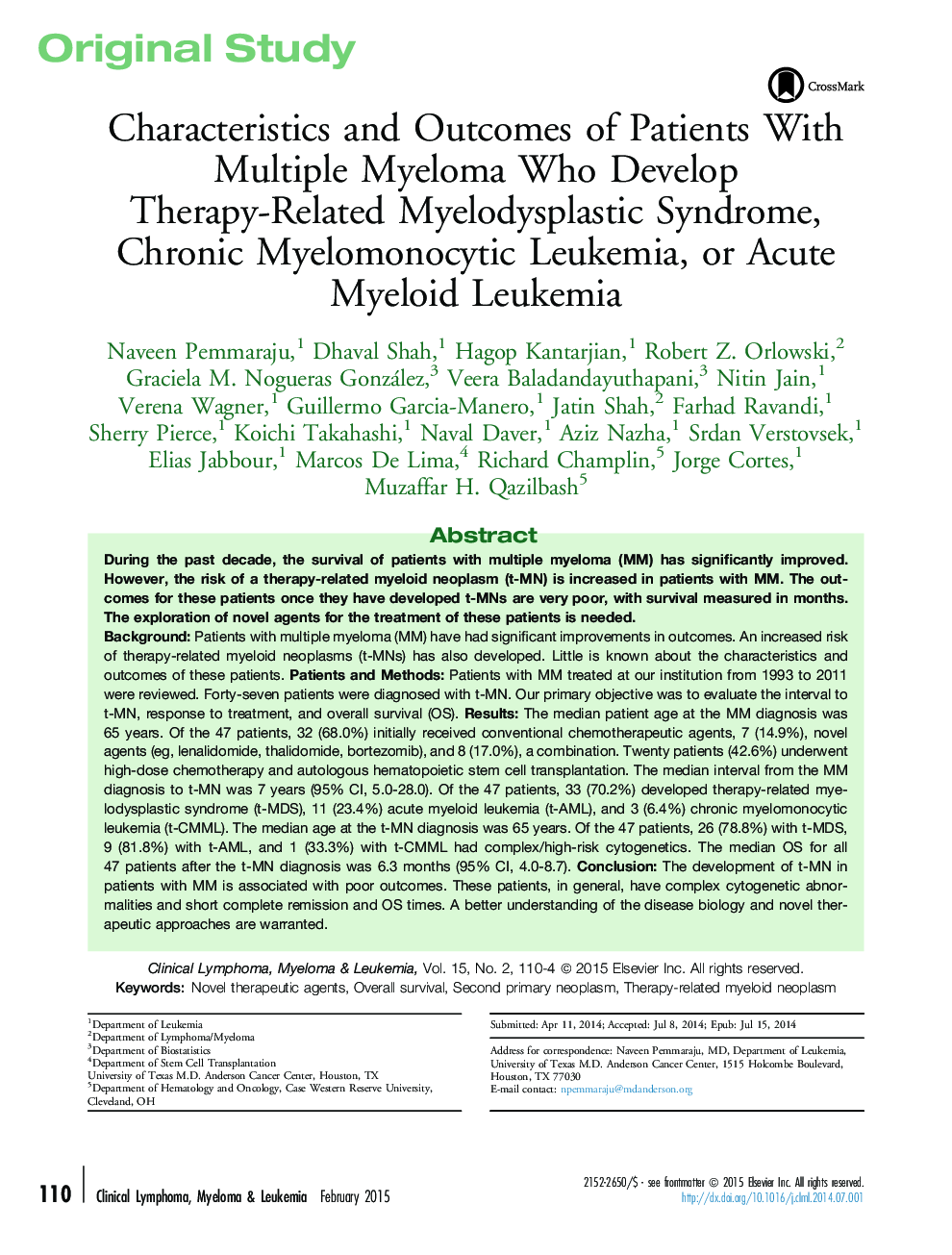| Article ID | Journal | Published Year | Pages | File Type |
|---|---|---|---|---|
| 2754744 | Clinical Lymphoma Myeloma and Leukemia | 2015 | 5 Pages |
BackgroundPatients with multiple myeloma (MM) have had significant improvements in outcomes. An increased risk of therapy-related myeloid neoplasms (t-MNs) has also developed. Little is known about the characteristics and outcomes of these patients.Patients and MethodsPatients with MM treated at our institution from 1993 to 2011 were reviewed. Forty-seven patients were diagnosed with t-MN. Our primary objective was to evaluate the interval to t-MN, response to treatment, and overall survival (OS).ResultsThe median patient age at the MM diagnosis was 65 years. Of the 47 patients, 32 (68.0%) initially received conventional chemotherapeutic agents, 7 (14.9%), novel agents (eg, lenalidomide, thalidomide, bortezomib), and 8 (17.0%), a combination. Twenty patients (42.6%) underwent high-dose chemotherapy and autologous hematopoietic stem cell transplantation. The median interval from the MM diagnosis to t-MN was 7 years (95% CI, 5.0-28.0). Of the 47 patients, 33 (70.2%) developed therapy-related myelodysplastic syndrome (t-MDS), 11 (23.4%) acute myeloid leukemia (t-AML), and 3 (6.4%) chronic myelomonocytic leukemia (t-CMML). The median age at the t-MN diagnosis was 65 years. Of the 47 patients, 26 (78.8%) with t-MDS, 9 (81.8%) with t-AML, and 1 (33.3%) with t-CMML had complex/high-risk cytogenetics. The median OS for all 47 patients after the t-MN diagnosis was 6.3 months (95% CI, 4.0-8.7).ConclusionThe development of t-MN in patients with MM is associated with poor outcomes. These patients, in general, have complex cytogenetic abnormalities and short complete remission and OS times. A better understanding of the disease biology and novel therapeutic approaches are warranted.
